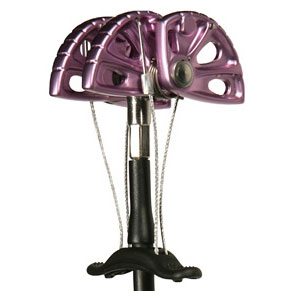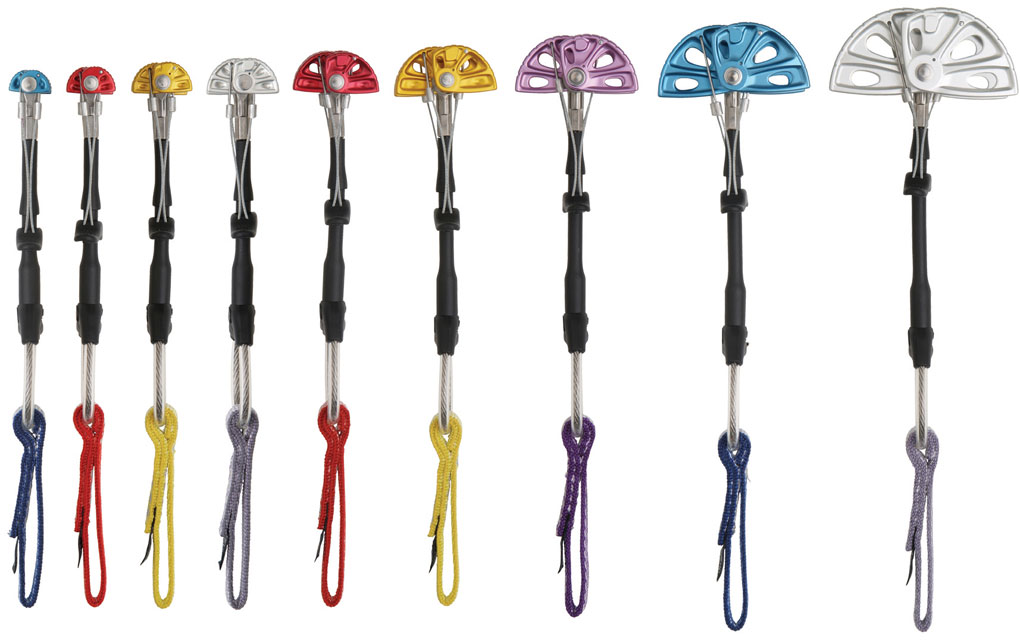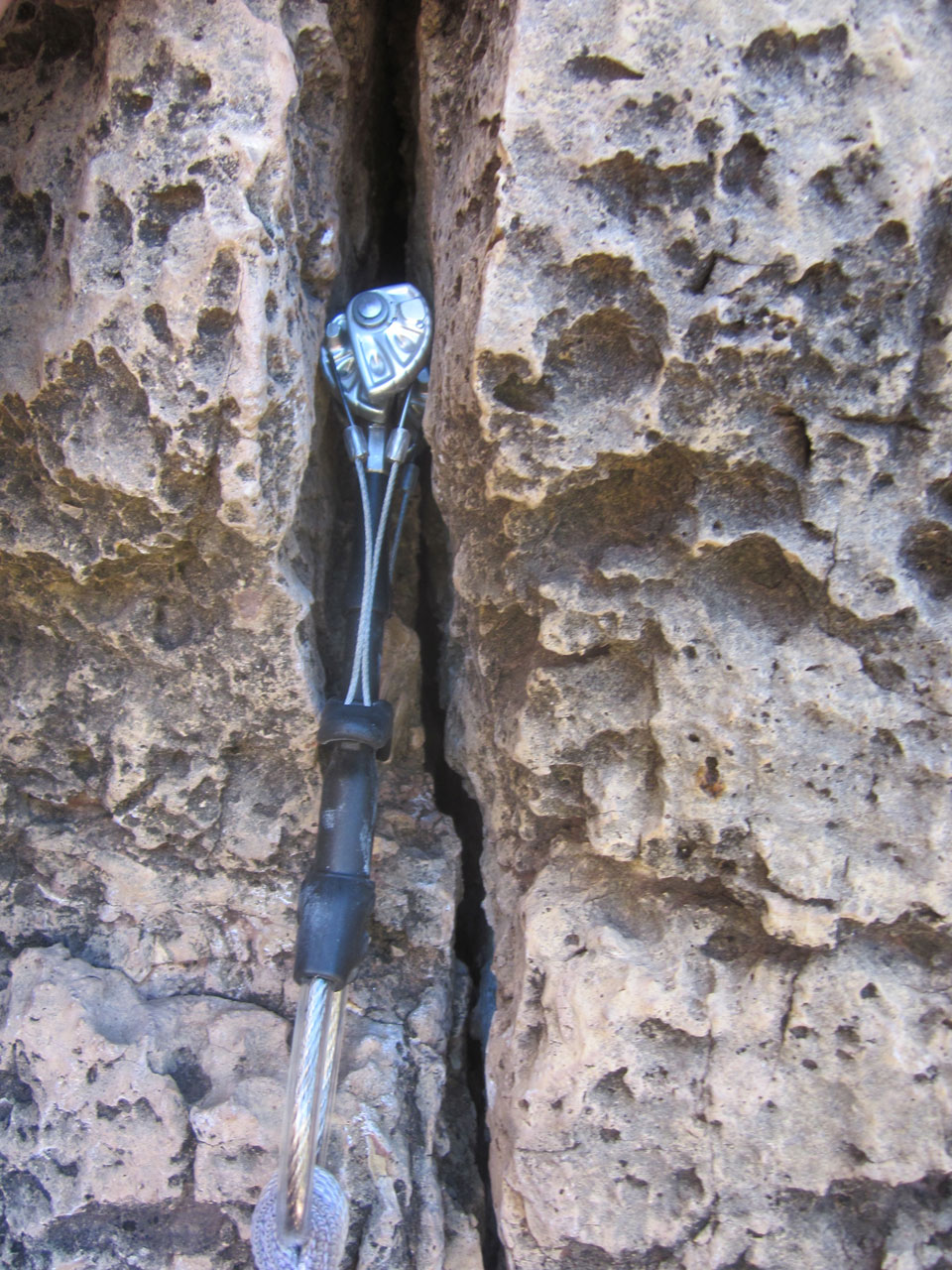 Wild Country Helium Friends Cams
Wild Country Helium Friends Cams
Classic Features:
- 13.75 cam angle
- Single axle
- Single stem
- Scaled head width
- Full floating trigger with independent cam triggering
- Full strength cam stops
- Color coded
New Features:
- Hot forged cams
- New trigger
- New Thumb loop
- New 12mm Dyn sling
- Trigger stop
- Nine Sizes
- New springs
- New stainless axle
- All units 12kN
- New stem cover
- More reach
- Up to 6% lighter per unit
- Up to 20% more range per unit
- Bigger overlaps
Range: 14 – 101.83mm
Background
To give Wild Country their due, they have been in the spring-loaded camming device (SLCD) game for a long time now. Their forged Friends were early successors of the original prototype devices pioneered by Ray Jardine in the late 1970s. (Historical note: Jardine is widely credited with inventing the cam, though similar concepts had previously been put forth by other climbers, notably Greg Lowe.) In the decades since, Wild Country saw its market share diminish at the hands of Black Diamond’s Camalots and some slightly more specialized cams, such as CCH’s Aliens.
Fast forward to 2011, and Wild Country has decided to answer its competitors. The Helium Friends are touted as being among the lightest and best cams out there—Wild Country’s attempt to dethrone the now-ubiquitous Black Diamond C4 cams. I tested a full range of them in a variety of climbing destinations across the country, from Yosemite to the New River Gorge, to find out well they did.
A Few Notes on the Review Process
A note on my guiding philosophy on this article: Opinions on cams are complex and often involve some degree of mysticism. When asking climbers why they prefer a certain type of cam, you’ll often hear responses such as, “I just feel like they’ll hold better,” or some similar judgment based upon an equally non-quantifiable metric. I am guilty of this to some degree as well, and to a large extent it has to do with subjective things such as which brand of cam you learned to climb trad with (and thus know the sizes implicitly) or which cam has caught your biggest whipper ever (a blue TCU in my case).
These sorts of experiences color our opinions and, to an extent, it is worthwhile to include intangibles such as how a cam “feels” in a comprehensive review. That said, I will try to separate these things from the facts that govern how the cams actually work. Bear with me, and hopefully we can paint the best possible picture of what climbing with a set of Friends is like, and then you can decide how well that fits your preferences.
The Nuts and Bolts
The Helium Friends set encompasses nine cams that span the range from 14 – 101.83mm. In real world crack sizes, this covers finger tips to fists. (For comparison, the BD C4 range uses eight cams to span the slightly larger 13.8 – 114.7mm range) True to their billing, they are light, sleek, and definitely look the part of a top-shelf cam.

At first glance, they look a lot like C4s: they have four cam lobes, single stems with floating triggers and a pair of trigger wires on each side, and a thumb loop at the base. The thumb loop is, in my opinion, a great feature on a cam, and I’m glad that Wild Country has followed Black Diamond and CCH here. Not only does in make it slightly easier when placing, but clipping aiders into a thumb loop to get a little more out of your high-stepping is way easier than with just a sling.
Upon closer inspection, there are significant differences between the designs of the Friends and the C4s. Most prominently, the Helium Friends have heads that are built on a single axle rather than two, but more on that in a minute. Reducing the material needed for the axle arrangement is how Wild Country achieves some of the weight savings that are a flagship feature of this cam line. The single-axle design means that all four cam lobes rotate about the same central axle (or “plane of rotation” as it is commonly referred to on manufacturers’ spec sheets). Though this reduces weight, it also reduces a cam’s effective range for a given cam angle.
Early on in design, a cam manufacturer has to decide on a cam angle for their device, then the cam is often sold as having either great range or great “holding power,” depending on which side of the spectrum they chose.
It should be noted here that all major manufacturers use cam angles that are within acceptable margins for both range and holding power. After all, all cams meant for free climbing are rated to similar levels, regardless of cam angle. So this isn’t really a safety issue, but it is a preference issue. The cam angle changes the way the cam looks and feels when you place them, so when people tell you they prefer the “feel” of a certain cam in various placements, cam angle often plays a role in forming that preference, whether they are aware of it or not. In the case of the Helium Friends, their cam angle (13.75°) is the same as the angle used in DMM’s Dragons, and sits in between cams made by Metolius (13.25°) and Black Diamond (14.5°).
In the smaller sizes, the stem is also longer on the Helium Friends than on the C4s (indeed, longer than any other cams that I’ve used). While the C4 cams have longer stems as the cams get larger, the Helium Friends all benefit from the extra reach that comes from a long stem. True, more weight could be saved by shortening the stem length, but the longer stem proved to be an asset in certain placements (or in retrieving certain placements).
Longer stems on cams are often cited as being a factor in promoting “walking,” because the longer stems act as a more effective lever for side-to-side movement, but I didn’t experience the cams walking more or less than C4s. Yes, the Helium Friends will walk on occasion, and, yes, it is usually the result of pilot error. In the end, I agree with Wild Country’s decision to choose a longer stem over shaving a few more grams.
Keeping walking to a minimum, thankfully, is the relatively stiff spring attached to the lobes. The action on the lobes is sharp, and it doesn’t require serious effort to retract the cam, but the springs are pleasingly stiff and feel as though they bite into placements well.
Cam lobes, across the board, are not round but are shaped as logarithmic spirals. This is the essential geometric factor that allows cams to transmit the downward force from a fall into outward force onto the sides of a crack. Conveniently, logarithmic spirals are noted in the math world for having the property that the angle between the tangent and the radial line is constant for all points along the spiral.

This constant value is what is the cam angle refers to. Smaller cam angles indicate tighter spirals, so the lobe separation changes faster as you depress the trigger, which results in a smaller usable range for the device. The other side of this coin is that the tighter spiral transmits greater force onto the rock per pound of force held by the stem of the cam.
It is also worth noting that the Helium Friends are rated for downward-pulling forces up to 11kN in the smaller sizes (#1 and below) and 12kN in the larger sizes. This is higher than many competing cams lines (such as Black Diamond C4s and Metolius TCUs) whose finger-sized pieces are rated to 8 or 10kN. To be sure, even 8kN is a huge amount of force, and discussions about the difference between rated strengths are largely academic. Even so, this is a point in Wild Country’s favor. Back to the review.


Excellent review! You did a great job of explaining the cam itself, as well as comparing it to the C4, which is the logical competitor (as opposed to TCU). Would have been nice to see some comparison to MasterCams, but I’ll live. I have a few older tech friends in my rack to fill in some gaps between Camalots like you mentioned — notably between #2/#3 and #3/#4, so it seems like I might benefit from upgrading to the Helium Friends whenever I decide to further augment my rack.
The other thing I would love to see is an overarching comparison of smaller cams: Wild Country, Totem (CCH), BD, and Metolius. But that will get expensive quickly…
Zak,
Glad you liked the review and thanks for the feedback. You make a great point about the comparison to Mastercams as they are an obvious competitor in the lower sizes (the Mastercams only overlap with the first half of the Helium range). I own exactly 1 Mastercam, and while I like it a lot, quality and function aren’t always the same across an entire cam line and I would have to try some of the other sizes before feeling confident that I wasn’t missing anything.
The other factor that made me balk at including them was that they (Mastercams) are very clearly trying to fill the gap left behind by CCH’s departure from the business. For this reason, I ultimately decided that they’d be better served in review that, exactly as you mention, included other small cam lines such as Totem/Fixe/CCH, Wild Country Zeros, C3s, and on and on. Your request for a small-cam-deathmatch review is spot on and it’s in the works. I just need to log some air time on a few other those other brands and we’ll be good to go….
Thanks again for reading and for the constructive ideas. Ultimately, we want to be reviewing what the climbing community feels would benefit them the best, so any thoughts you have on comparisons that your interested in seeing are important to us.
I know I’m late the party but a great review. Although I must say I think you understate the weight savings of the Heliums over the Camalots. True, there may be only 40 grams saved over the set, but a set of Heliums include an additional cam. In reality, a Camalot can a lot more if you’re a weight weanie like me. For instance, a 2.5 Friend weighs 4.13 oz, and a roughly equivalent #2 Camalot weighs 5.47 oz. That is an increase in weight of over 25% for one piece, and well over an ounce (38 grams I believe). Considering that people are counting grams on their biners these days, such a difference is not trivial for one piece. Regardless, they’re both great cams, but the Heliums are much lighter in the hand sizes and larger, which is where most of the weight is anyway. Still a great review, and thanks for it!
Hi,
Great review and glad you took time to explain the cam angle between cams. My one comment is that you reference BD C4 range for the #4 Cam (66 – 114 mm). BD seems to give their cam range as fully cammed (66mm) to fully open (114mm). If you measure the cam lobe distance as one would actually use it, you’ll see it has a much smaller range and closer to that of the Friend #4.